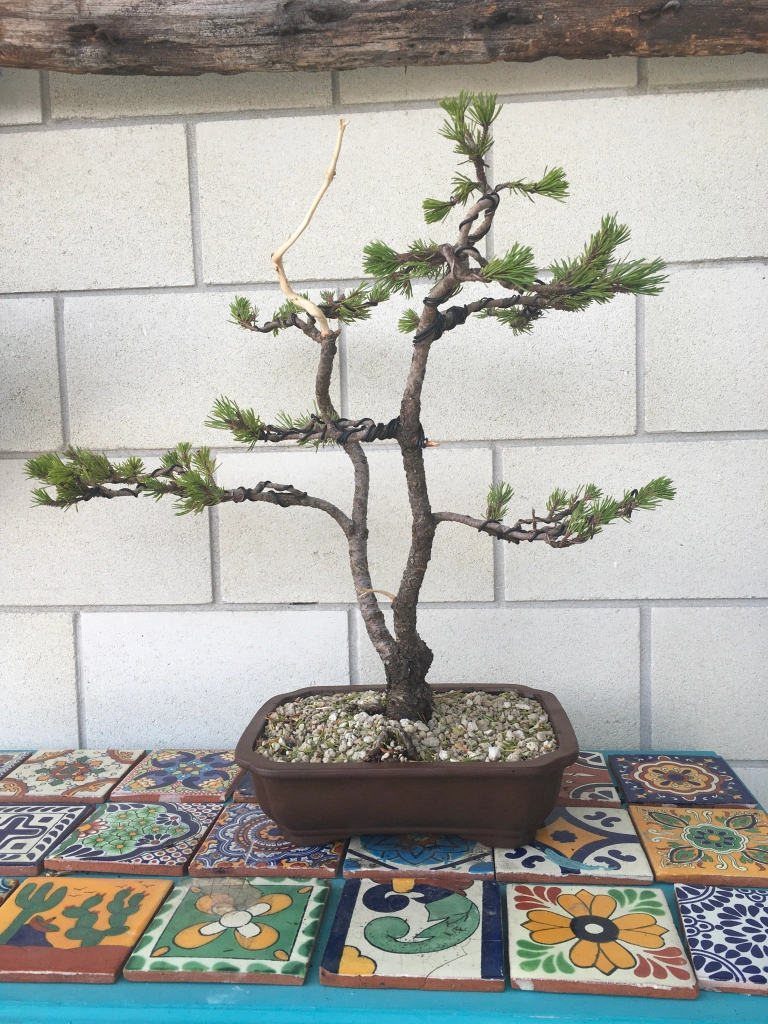Have you noticed how most answers to Bonsai related questions starts with “It depends”. The main reason for this is that we are working with a living organism and it is very rare for generalisations to be applied across all trees. The list below are guidelines to use, especially when styling a new or starter Bonsai tree and applies very much to the more classical Bonsai styles. There will always be exceptions, but here goes.
Branches within the lower one third of the tree. These branches should generally be removed as it helps to show the trunk line. It will expose the nebari and allow a clear view of the bottom part of the trunk where hopefully is some great interest. This can be either well-developed bark, interesting roots or some type of movement lower down in the trunk. There is an exception (I told you so!) and that is when you deliberately wants to leave these branches as sacrifice branches to help with thickening the lower trunk.
Branches pointing directly at you. The main reason here again is to allow the main trunk line to be visible. The exception is in the top third of the trunk / tree, especially if these branches are part of the apex of the tree.

Bar branches. These branches are ones that originate at the same level as other branches. If they are directly opposite each other, it is known as bar branches. Another issue with too many branches originating at more or less the same point is that a lot of sap will floe through that area which leads to an unsightly thickening in that area and could also be the reason for reverse taper. This is a thickening at that point with a narrower trunk below that point. Remove as many of these as you can, especially found in pines where the branches for a whorl, preferably leaving one as part of an alternately opposite branch scheme. Select the one that fits the rest of your design more naturally.

Parallel branches, usually originating close to each other, but directly above each other. This is more for aesthetics than growth patterns. The classical design of a branch to one side, then the next one up on the other side and then maybe a back branch and to be repeated as you move up the trunk, is the ideal and not always possible, but at least a good guideline to keep in mind.

Branches growing from almost the same point. This relates very much to the last two guidelines, but in this case refers to branches not necessarily growing parallel above each other or from the sight height, but just close enough for it to be unsightly. There is always the possibility that this will also lead to a situation where that area can thicken disproportionately compared to where other branches grow from to the increased sap flow.

Unusually vigorously growing branches. These branches take energy away from other branches and can cast a shadow across other branches due to its faster growth. It is also possible for these branches to thicken disproportionally to other branches and interfere with normal taper or the notion that branches lower down the trunk should be thicker than branches higher up the trunk. These branches should be shortened or removed.
Secondary branches growing from primary branches where the growth is in the wrong direction. This could be branches growing straight up or straight down, branches growing outside of the main design contours or even in the opposite direction of the flow of the tree or just that part of the tree or branch.
The leader. Older trees show a more rounded apex and this can be achieved by removing the leader, substituting it with a new leader or wiring it in such a way that it shows a more rounded form. This also helps with reducing apical dominance in trees and redistribute the energy in a tree.
As mentioned earlier, very few trees allow the opportunity to apply all of these guidelines, but it is still a good idea to keep these in mind as you work through the tree, selecting which branches to keep and which to remove. This is a video of the branch selection of a Camelia clump lifted from a garden. https://youtu.be/MeCBk-_ofEw
Please like, comment and / or subscribe to this blog. Your support is greatly appreciated.
We are also on Facebook and Instagram.












